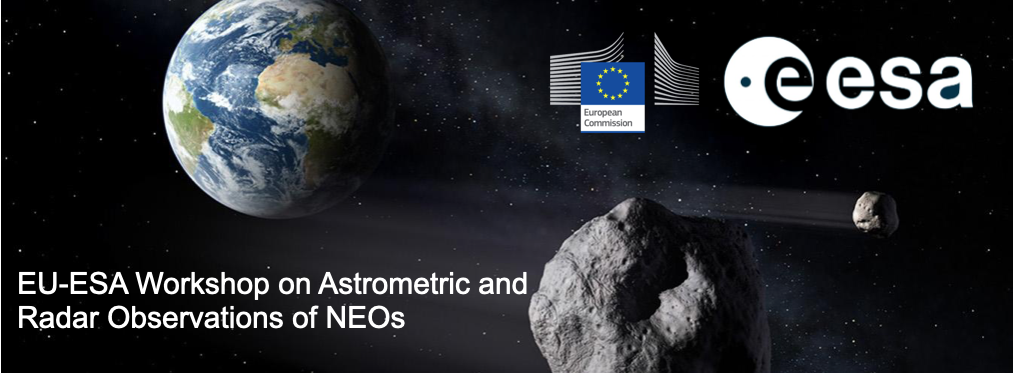The European Commission and ESA’s Planetary Defence Office together are organising the “EU-ESA Workshop on Astrometric and Radar Observations of NEOs” which will take place on 6–8 October 2025 at the European Space Research Institute (ESRIN) in Frascati, Italy.
The aim of this workshop is to bring together the international asteroid and planetary defence communities to critically assess and improve current practices in astrometric and radar measurements as well as orbit determination of NEOs. With the growing importance of precise tracking and prediction of asteroid trajectories, the workshop will focus on the sources of uncertainty in both optical and radar data, methods for properly estimating and reporting them, and the incorporation of new technologies and techniques to enhance the reliability of orbital predictions.
Key Objectives of the Workshop:
- Assess current methodologies used to estimate and propagate astrometric and timing uncertainties, including mathematical frameworks, calibration strategies, and effects in orbital determination.
- Promote the development of community guidelines on how to report and quantify uncertainties in astrometry and timing.
- Investigate new observational techniques and technologies (e.g., synthetic tracking, CMOS sensors, AI-assisted processing) and assess their impact on astrometric accuracy.
- Discuss other sources of astrometry/asteroid position measurement such as radar, stellar occultations, and negative or precovery observations.
- Identify facilities and instruments that could contribute to precise astrometry in the near future.
Tentative Sessions:
- Astrometric Observations of NEOs
This session will serve as an introduction to astrometric observations and to provide an overview of the current capabilities and limitations of facilities involved in the astrometric observation of NEOs. Topics will include observational strategies, instrumentation, and data acquisition methods. The session will also highlight recent progress in synthetic tracking, including non-linear approaches, as innovative techniques for improving the detection and tracking of faint and fast-moving NEOs. - On the Uncertainties of Astrometric Observations and effects on orbit determination
This session will delve into the quantitative analysis and interpretation of uncertainties associated with astrometric measurements. It will focus on how these uncertainties are estimated, modeled, and reported—differentiating between random (statistical) and systematic sources of error. The session will also assess the implications of poorly characterized uncertainties for orbit determination and risk assessment. Drawing on case studies, including recent IAWN campaigns, the session will showcase lessons learned and best practices, with particular attention to methodologies for evaluating and communicating timing and positional accuracy in astrometric data. - Non-Standard Astrometric Records
This session will explore unconventional yet valuable sources of astrometric information. Stellar occultations offer opportunities for high-precision position measurements, while archival data, including precoveries and negative observations, can provide critical constraints for orbit determination and long-arc fitting of NEO trajectories. - Radar Observations and the Perspective for a European Radar Facility
Radar plays a pivotal role in refining NEO orbits and improving impact predictions. This session will cover how radar measurements are acquired, calibrated, and interpreted, and discuss how these data are incorporated into orbit determination. A key focus will be the current status and future prospects for establishing dedicated radar capabilities in Europe to support planetary defence efforts. - Emerging Technologies and Techniques
Looking to the future, this session will cover the adoption of CMOS sensors and their astrometric performance, as well as the integration of artificial intelligence and machine learning into astrometric data reduction pipelines. Presentations will also introduce upcoming facilities and instruments expected to significantly enhance the astrometric tracking of NEOs in the coming years.
A dedicated session will aim to consolidate input from all participants into a community white paper or technical document outlining best practices for uncertainty estimation and reporting.

